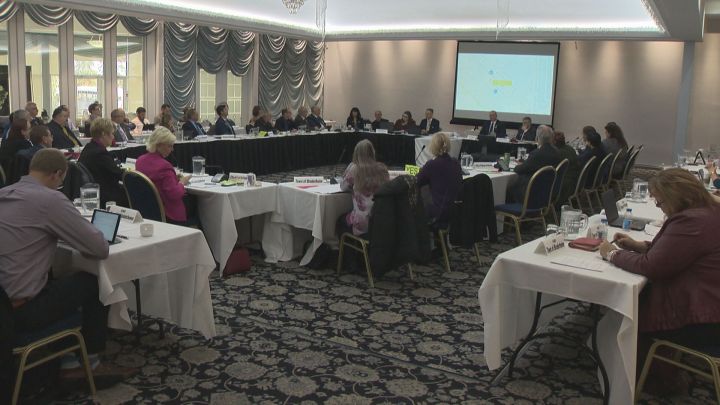The mayors and reeves of the Capital Regional Board have voted, 22-2 to adopt a growth plan for the entire greater metro Edmonton region that calls for higher housing density targets.

The plan sees higher density as helping with improved transportation and as byproduct of that, greater economic development opportunities.
The plan was always controversial, and there was talk prior to the vote that some of the smaller communities would vote as a block to scuttle it.
“I believed it always had the potential of going off the rails,” St. Albert Mayor Nolan Crouse, and board chair, said.
“There were things that, it didn’t matter whether it was density, or ag (agriculture) preservation, whether it was the importance of the small community, 5,000 population. Any one of those had the potential of having it go sideways. But at the end of the day, it’s a 22-2 vote which you need 17, you need 75 per cent, so it’s passed.”
Parkland County voted no, because its council didn’t agree with the 24-member board overseeing a new economic development agency for the region.
“We have an ability to certainly capitalize on that market here. But is the right body to move that forward?” Mayor Rod Shaigec said.
The mayors of the region are looking at agriculture, and the value added food industry as key points to economic development.
Leduc County also voted against the plan. Mayor John Whaley wanted a delay because of the ongoing annexation talks. He doesn’t think enough has been done to protect high value agricultural land.
“This is a time where we’re really serious about supporting the primary agricultural land for the future generations,” he said. “Now is the time to stand up and do it. We missed a chance 20 years ago, now is the time to do it now. And we’re trying to get that conversation and it’s not about stopping growth, that is not what this is about. It’s about a smarter job of doing it.”
“There’s a lot of poorer land around this region and that’s where densification should happen and industry should move to. Taking three feet of black soil away and burying it, which has taken thousands of years to have happen, that could be classed as criminal in some parts of this world.”
“I’m very upset about that, and I’ve pitched that to the board before and to the government,” Whaley complained to reporters.
“They just walk away and say, ‘not our problem.’ It is everybody’s problem. That’s what I’m trying to say. This province has to get involved in some regional planning of the agricultural lands for the future.”
The higher density targets are for new area structure plans only. Ones already on the books are grandfathered. It’s expected any new developments that will be faced with the stricter rules of 40 residents per hectare are in the City of Edmonton, and likely the Bremner development in Strathcona County.
“In that 10-year time frame, we’re going to see Bremner start,” Mayor Roxanne Carr said. “We don’t know when. It depends on the economy. But that would be about 55,000 people so we’re going to be looking to the growth plan.”
“The main average is 40 and that allows us to create that diversity in housing that we’ve talked about all along.”
The plan, under its new guidelines, is expected to prevent development of at least 250 quarter sections over the coming decades.
Now that the growth plan has been passed, it’ll move on to the province for ministerial approval.



Comments